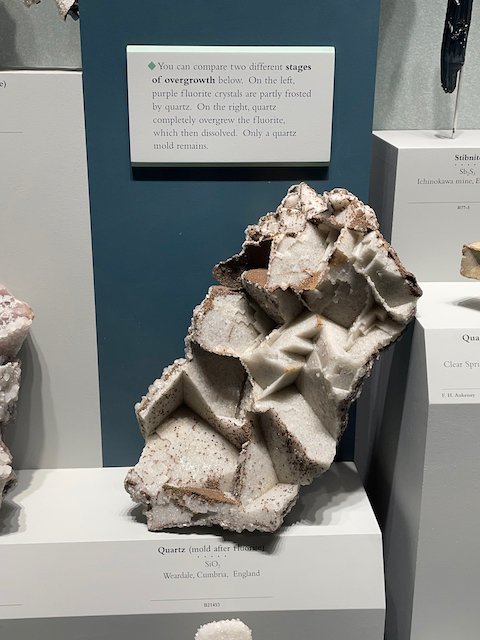Epimorphs & sugar
I’m on sabbatical in Washington DC to continue developing my work with rocky landscapes. Having worked with quite a few museums and archives in the past, I’ve started thinking about mineral collections, how the samples in them arrived there, and where they came from. To ground this investigation closer to home I started by visiting Brantwood in Coniston, which is where John Ruskins’s geology collection is housed at ‘The Treasury’.
In DC I’ve been visiting the Smithsonian museum and their vast collection of rocks. This modern museum is a real contrast to the wooden cases in Ruskin’s old study, and they have an incredible collection of different minerals.
The Director at Brantwood thought that its likely there is some connection between the two collections, given the dates at which they were started. But there is nothing on record at the Smithsonian. There are samples of minerals that are from the same mines, but more work is needed to find out if there is an interesting connection, or indeed if there is a proximity in place and time of either their formation, their extraction, or their collection.
One of the samples in the museum is this Quartz, that has made a mold around fluorite chrystals, which subsequently dissolved. A mould made of one crystalline structure by another. The way that a fossil is surrounded by rock, and if they become seperated they are mould and cast.
The Quartz has a sugary look to it, something that Ruskin also observed in Modern Painters Vol IV, p105. (below). I’ve started to experiment with casting in sugar.

